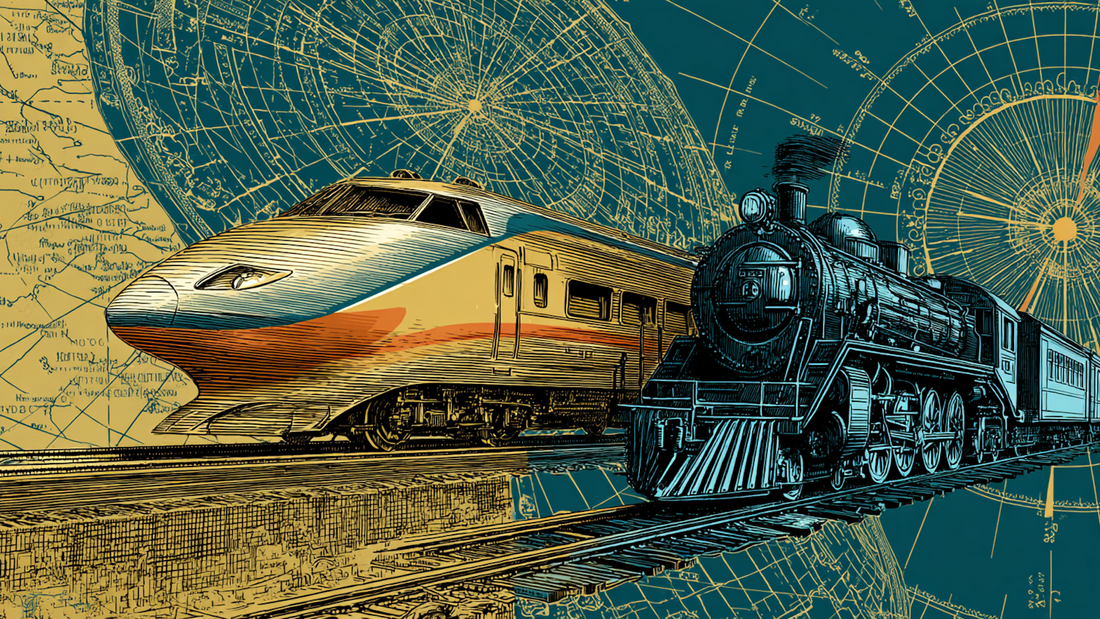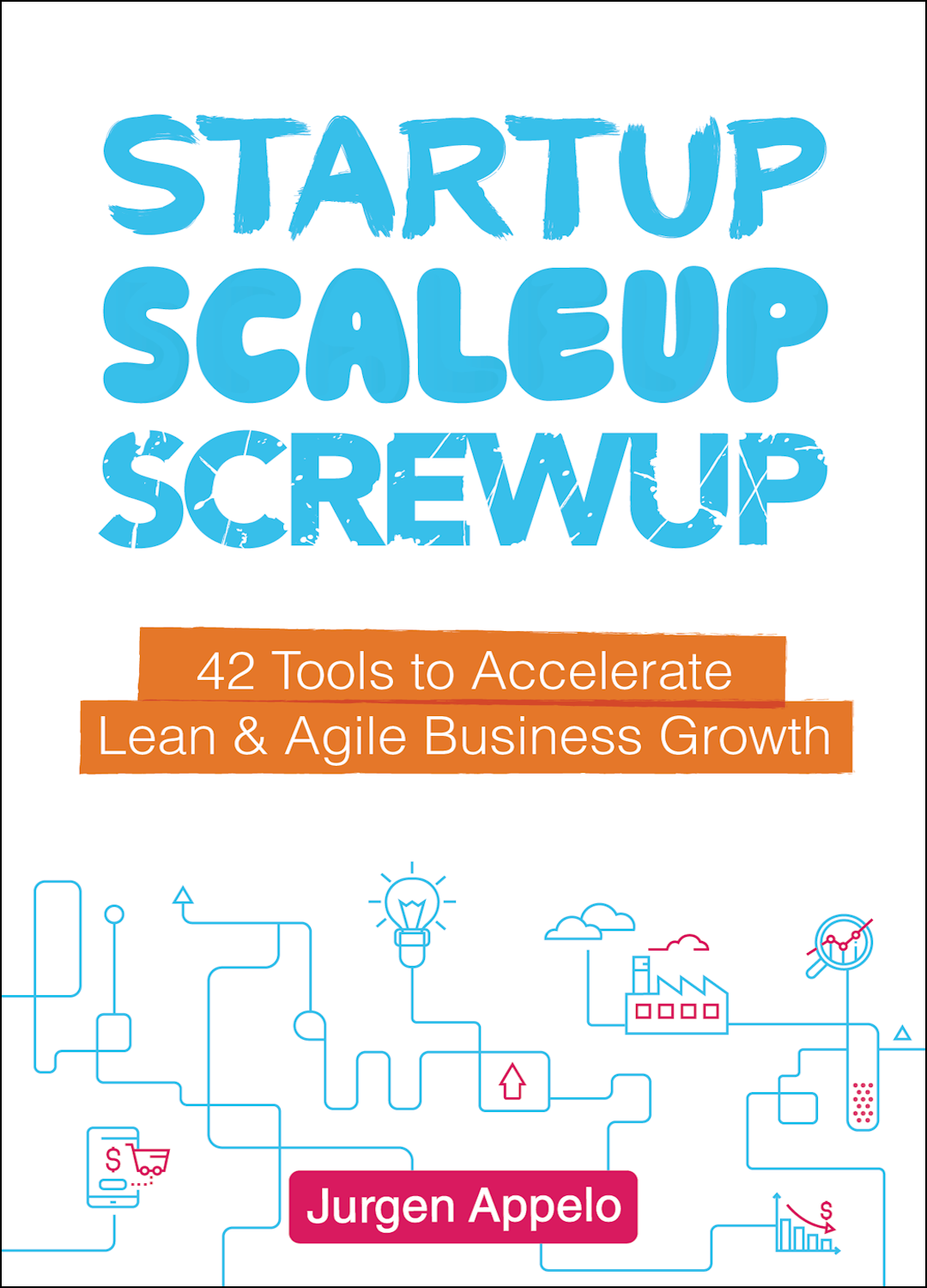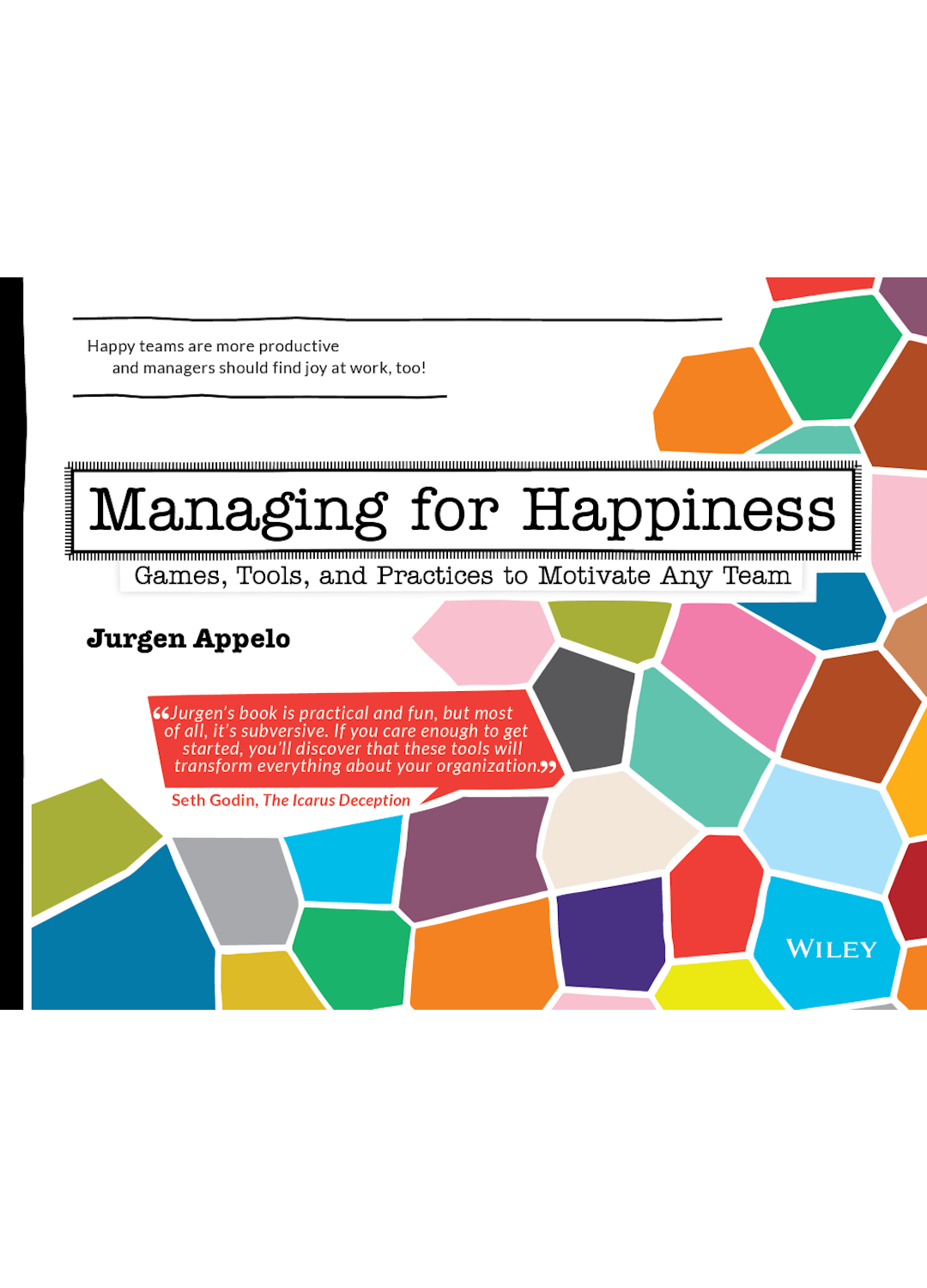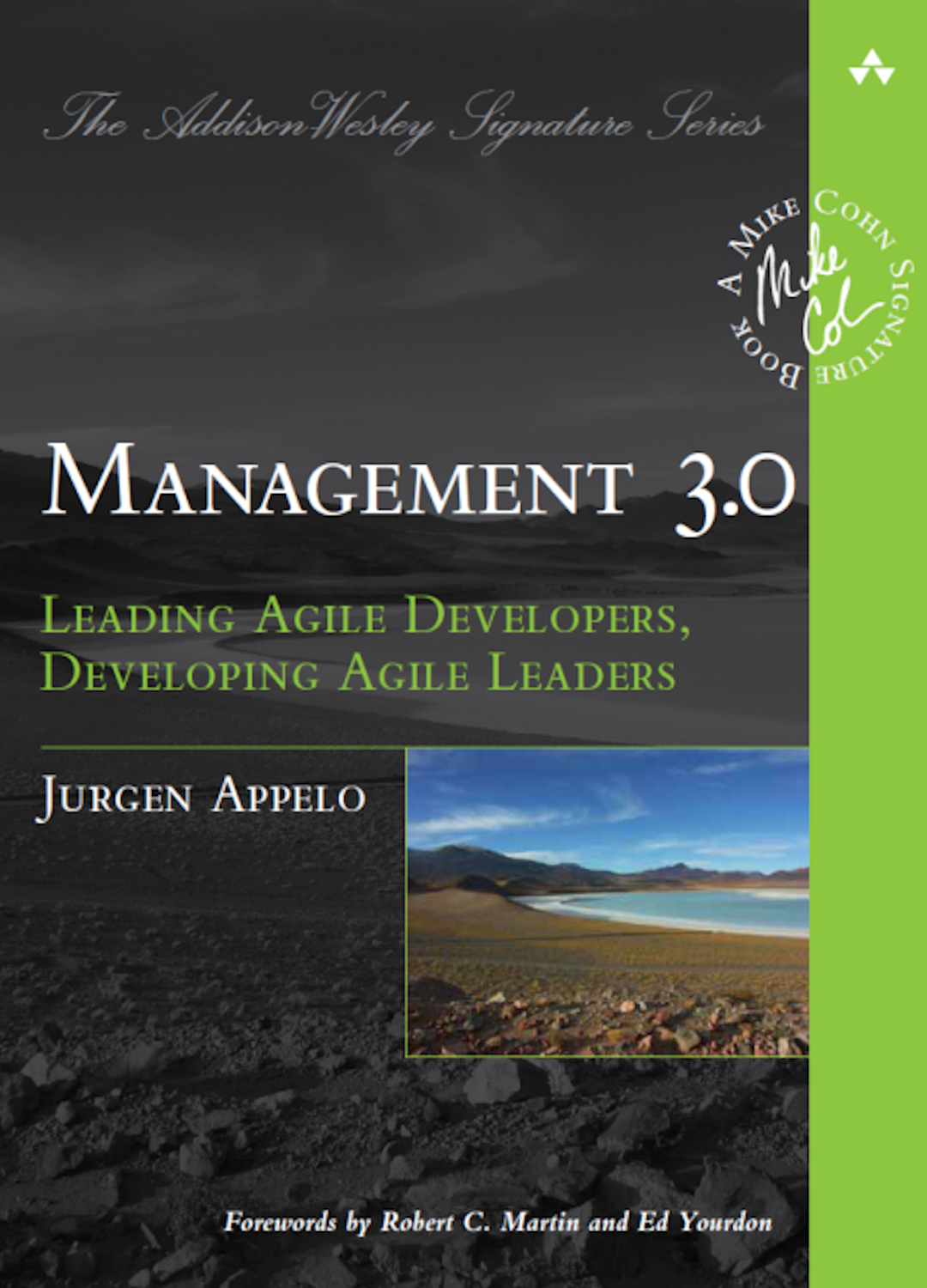We're going to need dual-track business agility.
For twenty years, Scrum was the Shinkansen (新幹線) of work management. The fastest kid on the block. Now, it's the family minivan blocking the left lane while AI agents are flashing their headlights. Once, Scrum was the fast lane—the bullet train of modern work, the agile manifesto made flesh. But times change, work accelerates, and the machines aren't waiting for standups and retros.
We're going to need dual-track business agility.
On High-Speed Trains
Almost every week, I ride the rails between Rotterdam and Brussels because my hubby insists on working in the epicenter of European bureaucratic madness—a.k.a. Brussels. So yes, I've become something of a connoisseur of the Dutch–Belgian train experience.
What never fails to baffle me: the so-called "international" train between Amsterdam and Brussels stops at exactly two Dutch stations—Rotterdam and Breda—before deciding that the entire countryside of Flanders deserves a personal visit. Noorderkempen, Antwerpen-Centraal, Antwerpen-Berchem, Mechelen, and what feels like every lamppost within a ten-kilometer radius of Brussels get their moment of glory and a dedicated stop. On the Dutch side, the train gallops like a racehorse. Cross the border to Belgium, and suddenly we're on a sightseeing tour led by a donkey.
The reason for the epic slowdown is that Belgium's rail infrastructure is decades behind. Most NMBS trains cannot handle high-speed travel or the signaling systems on Belgium's shiny high-speed line (the one that Eurostar actually uses). So, regular "international" trains are forced to plod along the old tracks, reminiscing about the good old days when steam engines were still a thing.
Sure, the newer Eurocity Direct service skips most of Belgium's pit stops and moves at something resembling modern speed. But for the rest, the Belgian side remains a bottleneck. Acceleration of the entire experience is held hostage by legacy systems.
On Self-Driving Cars
In the case of automotive modernization, the situation isn't much different. The great unsolved puzzle of self-driving cars isn't the car. It's the road. We expect the machines to behave flawlessly in an environment designed for caffeine-addled primates with varying levels of attention span and regard for traffic law. Trains have it easy: they follow their own private rails, ruled by standardized tracks and signals. Cars, on the other hand, must navigate a chaotic socio-technical mess that barely qualifies as a transportation system.
Public roads are an anarchic wonderland of half-erased lane markings, contradictory signage, and intersections designed by surrealists. Humans get through it all using habit, instinct, peer pressure, and perhaps a touch of collective telepathy. Machines, meanwhile, have to translate all that daily madness into math—parsing every pothole, pigeon, and pedestrian into navigable data. No wonder they freeze up at what engineers politely call "edge cases," otherwise known as "daily problems."
The obvious solution—giving robot vehicles their own spotless, rule-abiding infrastructure—would make things much simpler. Imagine highways that actually talk to the cars, with no tuk-tuks, beer bikes, or BMW owners randomly darting left and right. But that would require a complete redesign of a parallel system and decades of urban surgery. That's not happening anytime soon.
So, the dream of full acceleration inches forward at human speed, with humans as the major bottleneck, trapped on roads built for our own chaos.
On Dedicated Lanes
Progress always seems to happen when someone finally decides to stop sharing the road. The Japanese figured this out decades ago: their legendary bullet trains glide on exclusive tracks where nothing slower can trespass. The result is precision, speed, and a nation that sniggers at European timetables. The same principle shows up everywhere—from bus-only or taxi-only lanes (where commuters and the elite whisk past the traffic jam apocalypse) to airport priority queues (where business travelers and loyalty card holders laugh at the endless line of holiday tourists).
Even in agile software development, the idea pops up in the form of dual-track development, where teams keep discovery work separate from delivery tasks: one lane for exploration, one for execution. And it appears on Kanban boards with different swim lanes for different classes of service. Everyone gets where they're going, but different items move at different speeds. The whole system accelerates with fewer head-on collisions.
That's how you fix bottlenecks in any complex system: you stop pretending everyone moves at the same speed. You give the fast lanes to those who can handle them, and the slow lanes to those who can't. Acceleration isn't about equality—it's about design. The world runs smoother when we stop forcing trains, buses, taxis, horses, donkeys, and ideas to all share the same track.
Once, Scrum Was the Fast Lane
Twenty-five years ago, Scrum was a revolution disguised as a framework. At a time when organizations moved like lame donkeys, Scrum taught teams to sprint—to think small, ship fast, and learn faster. It gave developers permission to talk to customers, managers a reason to get out of the way, and organizations a method to adapt without falling apart. Sprints, backlogs, stand-ups, and retros weren't just rituals; they were acts of rebellion against the lumbering giants of waterfall thinking.
For a glorious few decades, Scrum was the fast lane—the place where motivated teams could outrun corporate inertia and rediscover a sense of flow, on their own separate track. It turned work into something living, iterative, and human. Scrum didn't just change how software was built; it changed how people thought about change itself. Scrum was the high-speed train with a dedicated lane that everyone aspired to board. It proved that you can go fast if only the entire organization can adapt to the new infrastructure.
Now, Scrum Is the Slow Lane
Scrum was built for humans—for task boards, sticky notes, and the beautiful chaos of group discussion. But the future won't wait for our bi-weekly cycles. Hybrid teams of humans and AIs are emerging, and there's no reason for them to play by Scrum's rules. Algorithms don't need stand-ups, they don't forget tasks, and they certainly don't waste time arguing about backlog grooming versus backlog refinement. Their world runs on digital time, not biological rhythms.
Trying to make AI agents follow Scrum is like forcing self-driving cars to yield at every crosswalk. In traffic, that makes sense. In the enterprise, it's absurd. The rituals that once liberated humans now shackle their digital colleagues. As artificial minds join our teams, they'll demand their own lanes, their own cadence, and their own logic of collaboration. The challenge ahead isn't to make AIs agile—it's redesigning business agility itself, so humans don't become the bottleneck in their own product development process.
Acceleration is the new Agile. But only when we take Scrum out of the loop.
Do you like this post? Please consider supporting me by becoming a paid subscriber. It's just one coffee per month. That will keep me going while you can keep reading! PLUS, you get my latest book Human Robot Agent FOR FREE! Subscribe now.
A Separate Lane for Humans
Scrum is aging infrastructure—a beautiful relic of the human era. It was invented for teams made of coffee, cortisol, and collective confusion, not for digital minds that run on electrons and precision. Every core practice in Scrum—timeboxes, task boards, standups—was crafted to manage the messy psychology and sociology of human collaboration. It was never meant for beings who don't get tired, bored, or passive-aggressively silent in retrospectives.
Take sprints, for example. They make perfect sense for humans because we need external boundaries to protect our mental bandwidth. Sprints offer relief from chaos: a rhythm, a finish line, a fleeting sense of progress. Those little cycles of focus and closure reduce overwhelm, boost motivation, and manufacture the illusion of momentum. Sprints keep teams socially synchronized. Shared reflection creates rhythm, trust, and accountability. Scrum's cadence is emotional engineering disguised as process efficiency.
Then there's visibility—the sacred Scrum board. It's not just about tracking tasks; it's about regulating anxiety. Humans need to see work moving, because visible progress produces dopamine, and dopamine keeps everyone from quitting their jobs to raise alpacas. Shared boards soothe the uncertainty of complex work. They make the invisible visible, fostering belonging, collaboration, and mutual responsibility. It's not technology—it's therapy with post-its.
And finally, the rituals: standups, retrospectives, and other ceremonies that serve as daily recalibrations of morale and sanity. Humans need rhythm and repetition to stay aligned. We crave communication, validation, and a sense of shared struggle. These rituals are social lubrication—keeping egos balanced, conflicts exposed, and emotions processed just enough to keep the engine running.
But AIs don't need this psychological scaffolding. They don't lose focus, question purpose, or spiral into existential dread after a failed sprint. For them, Scrum's social engineering is dead weight. Machines don't need morale—they need throughput. Which is why the future of work requires two lanes: one optimized for emotional mammals, and one for emotionless speed demons.
A Separate Lane for Machines
Machines don't need motivation—they need architecture. Their version of "teamwork" isn't about feelings, feedback, or fairness; it's about alignment, context, and precision. Where humans thrive on collaboration and meaning, robots thrive on clarity and constraints. To make them work well together, we don't need managers or coaches—we need orchestrators, engineers, and protocols that define how intelligence flows between systems.
AI agents operate in ecosystems, not teams. They don't hold standups; they exchange data. Their version of communication isn't conversation—it's coordination. The human equivalent of empathy for them is context engineering: giving each agent the exact information, objectives, and parameters it needs to act without hesitation. The quality of their work depends on how well we define context, not on how we "invite collaboration" through the brevity of our user stories.
Instead of timeboxes, machines need surveillance. Continuous monitoring, evaluation metrics, and automated corrections. It's not about morale; it's about maintaining integrity. AIs don't celebrate sprint reviews; they update models, retrain weights, and adjust probabilities. We measure their learning in tokens per second, not in conversations per week.
And where humans need autonomy to feel trusted, AIs need governance to stay useful. Command-and-control isn't tyranny in their world—it's how you prevent chaos. The faster teams go, the more important safety and security become. Workflow orchestration replaces management, connecting agents, APIs, and models into coherent value chains wrapped in responsible AI. The challenge isn't to motivate them; it's to keep them from accelerating themselves into a corporate train wreck.
This is the infrastructure of the robotic lane: context, orchestration, and control. No sticky notes. No therapy sessions disguised as meetings. Just systems talking to systems, relentlessly optimizing for output. The only emotion involved is human amazement—if we manage to keep up.
Dual-Track Agility
The future of agility isn't a single highway—it's a split system. Like the high-speed trains of Japan or the security lines at Schiphol Airport, the next generation of work needs separate but connected lanes—one for humans, one for machines. The old dream of "one framework to rule them all" is quaint. We're past that. Humans and AIs move at different speeds, think in different patterns, and fail in completely different ways. Forcing them to share the same lane is how you get gridlock, not progress.
Dual-Track Agility is about building parallel infrastructures: a human lane optimized for collaboration, emotion, and meaning, and a machine lane optimized for precision, scale, and speed. But the real magic lies in the interchange—where work hands off between slow and fast, between intuition and computation.
Future agility won't just manage sprints and backlogs; it will choreograph flows across species of intelligence. It will define when the humans explore, when the robots execute, and how both adapt in sync. The new Agile isn't about treating everyone equally—it's about designing work ecosystems where every kind of intelligence operates at its natural pace, connected through protocols, not post-its.
The future of work is parallel, not sequential.
The Shift of the Dominant Lane
Right now, most organizations still live entirely in the slow lane. Scrum boards covered in Post-its, sprint reviews with too many humans and not enough data—an ecosystem built for biological bandwidth. AIs are there, sure, but mostly as interns: they write the meeting notes, crunch a few numbers, summarize yesterday's chaos. The humans still steer.
But that balance won't last. The gravitational pull of acceleration is relentless. As automation scales and agents grow smarter, more and more work will migrate to the fast lane. Tasks that once required coordination meetings, handoffs, and polite Slack messages will become fully automated flows. Companies won't just do things faster—they'll do more things with the same number of people. The ratio shifts: fewer hands on keyboards, more minds orchestrating AI agents.
In this new reality, the fast lane becomes dominant. Humans won't vanish; they'll evolve into conductors—designing workflows, defining ethics, and setting goals for fleets of autonomous agents. Agile will adapt accordingly, shedding its people-centric rituals in favor of orchestration protocols, context management, and dynamic governance.
The Agile of the future won't ask, "How can humans work better together?" but "How can humans and machines think, act, and adapt together at scale?" The answer will define the next industrial revolution.
Do you like this post? Please consider supporting me by becoming a paid subscriber. It's just one coffee per month. That will keep me going while you can keep reading! PLUS, you get my latest book Human Robot Agent FOR FREE! Subscribe now.
Scrum is Done
Scrum is done the way the Elizabeth Line and the Gotthard Base Tunnel are done—magnificent feats of engineering, celebrated milestones in human coordination. They're symbols of what disciplined collaboration can achieve, and they'll serve their purpose beautifully for decades. But even monuments age. Maintenance crews will keep repainting, reinforcing, and retrofitting, just as the Scrum Guide gets its periodic facelift to look "modern" again. Yet the foundations remain what they are: solid, admirable, and increasingly outdated. Scrum's legacy will endure—not because it's still fast, but because it once was.
Scrum is Finished
Scrum is finished the way good books are finished. I still sell Management 3.0 and Managing for Happiness, and they're holding up quite nicely, thank you very much. The principles are sound; the metaphors still land. But the world they were written for is fading in the rearview mirror. Scrum, too, captured the zeitgeist of its era—when human teams needed structure to move faster. It was a product of its time, like all revolutions. Now, the revolution has moved on. The next edition won't be a rewrite—it will be a replacement.
Scrum is History
Scrum is history the way Star Wars and The Terminator are history—aging classics that defined genres. People still quote them, rewatch them, and study them to understand how greatness was once achieved. They remain inspiring precisely because they remind us how far we've come. Scrum deserves that same reverence. It's not being buried; it's being honored. The framework taught millions how to collaborate, inspect, adapt, and deliver in a world that desperately needed those skills. It earned its place in the canon.
Scrum is Not Dead
But let's be clear—Scrum isn't dead. Dead things stop mattering. Scrum still matters. Teams will continue to use it for years, perhaps decades, just as people still read old books and quote old films. Just like some people enjoy a ride on one of Belgium's ancient local trains. But the center of gravity for business agility is shifting. Scrum is no longer the default speed for progress—it's the scenic route, the human lane, the infrastructure that once carried us into the future but now connects us to our past.
Scrum will remain valuable, just not dominant. The world is accelerating toward the fast lane—where humans orchestrate and machines execute. In that new landscape, Scrum will stand proudly in the museum of modern work: respected, loved, and outpaced by the future it helped to create.















